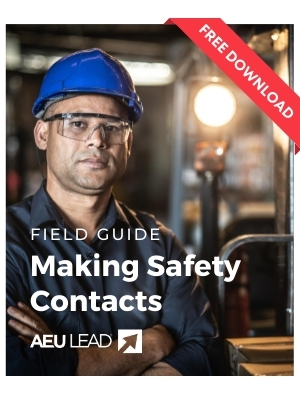Safety observations in the workplace help employees learn to identify both unsafe acts and conditions in the workplace or job site. A safety observation is an engaging activity that allows employees to take ownership of the well-being of both themselves and their peers.
At-risk behaviors are the leading cause of injuries in the workplace. They occur most often subconsciously or while working on “autopilot.” Employees take chances when they don’t fully understand the risks involved or when they feel there’s a significant benefit to be gained from taking the risk. The process of having your employees learn how to both identify at-risk behaviors and how to communicate with the person who is at risk is called a safety observation.
5 Keys to Completing Successful Safety Observations In The Workplace
1. Identify the at-risk behavior.
The first step of any successful safety observation is to identify at-risk behaviors. Employees should observe and recognize behaviors that involve unnecessary risks as well as actions that could be improved upon. Some examples might be an employee not holding the handrails, an employee not wearing fall protection in an elevated position, or an employee riding on the counterweight of a forklift. Once the at-risk behavior has been identified, then you should determine the sort of incident that could occur. Make sure to identify all types of injuries or illnesses that could result from the at-risk behavior. Finally, make a connection between the possible outcomes and subsequent impact upon those things most important to the employee.
2. Make contact in the moment.
Making contact is intended to express care and concern for an individual’s well-being. When making contact with an employee, it’s always a best practice to do so respectfully and one-on-one, away from other employees.
Once you have identified someone at risk, the next step is to gain the employee’s attention without startling them or putting either of you in harm’s way. Simply ask to speak to them for a moment. Share your observation with them and let them know that you are concerned. At this point, you want to help the employee understand the potential consequences involving their actions and the impact they could have on things they value most (e.g., family, friends, hobbies, health, income). Next, you want to have the employee start to recognize that the at-risk behavior could have severe consequences.
3. Involve employees in the process.
Once you have pulled the employee aside to talk, now you want to focus your efforts on having that employee reflect on the at-risk behavior and try to have them determine the basis for it. Perhaps they were taking a shortcut or doing something strictly out of convenience, but the goal is to have that employee recognize their at-risk behavior. Once they understand the cause and effect of their actions, ask them for input on how that job or task could be performed differently to place them at less risk. Finally, you want to ensure you get buy-in from the employee and any support they might need to change the behavior moving forward. You want to help guide the process while allowing the employee to provide solutions for the at-risk behavior.
4. Gain alignment.
The purpose of this next step is to focus on future decisions and not past actions. Let the employee describe alternate courses of action that they will take for the at-risk behavior. Maybe they will use an elevator instead of stairs for transporting tools, or possibly they will put up barricades before starting work. At this point in the conversation, you should help identify any additional training, equipment, or procedural upgrades that might be needed. Finally, gain the employee's commitment for future work. Having the employee commit is very important and improves the likelihood of a successful outcome.
5. Support the new behavior.
Statistics show that it can take two months or more for new behaviors to become automatic. Therefore, follow-up will be necessary to ensure that new, safe behaviors are forming. You should encourage employees to seek help from their peers. Utilize all available resources. Try to follow up weekly with the employee to ask how things are going. Make sure the employee understands that you care for them and that you want to ensure they are taking the proper steps to do the job safely every time. 
Safety observations aren’t always easy, and it will take some time to become comfortable talking amongst fellow employees—some who you may know very well and others not at all. The biggest obstacle in overcoming this is knowing that you are doing these observations to help keep everyone safe. Your sincerity will resonate with your employees. They will be appreciative that you truly care about them and their safety. As a result, you should see a decrease in at-risk behaviors and an increase in safe, effective practices for the good of both the employee and the company.


